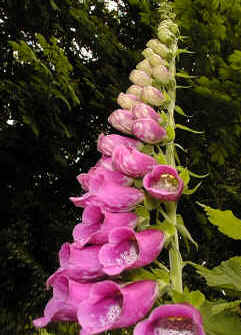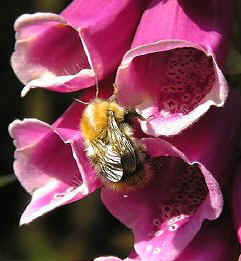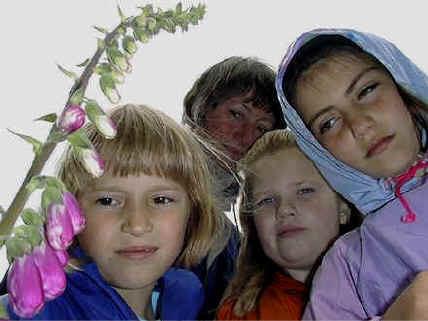The foxglove is tall (1.5m) so that it can be seen.
Often a mass of plants grow in the same area maximising the visual signal to passing
Bumble bees.
Bumble bees, of which there are many species, are the main pollinators of foxgloves.
The foxglove is purple. Bumble bees are particularly
attracted to this colour. Interestingly their eyes are not sensitive to all the
colours of the spectrum. They are colour blind to red although they are sensitive to blue,
green, orange, yellow and ultra violet.
|
 |
- Often the weather during the summer may be cold and wet for several weeks at a time. As
a result insect activity is minimised and the chances of pollination much reduced. To
overcome this the Foxglove has an extended flowering period. It starts
flowering in late May or early June and continues through to September. The flowers are
first produced on the bottom of the flowering stalk or raceme. In turn, each of the
flowers matures in succession. The last to mature is therefore the flowers on the very
top, the highest point. Thus the flowers are still visible even if the surrounding
vegetation has grown up. Note the green immature flowers at the tip and those which
are mature and therefore open. Also that those flowers which are in an intermediate
stage are purple and hence attract insects. However the mouth of the flower is kept closed
until the flower is ready for pollination.
|
 |
- A bee's eye view of the open foxglove flowers. Note the wide open mouth
of the flower. It has a lip or landing place which sticks out of the
entrance. The entrance also has guard hairs which deter smaller insects
from crawling into the flower. The hairs may also offer some support to the bumble bee as
it often scrambles for grip upon landing. The downward shape of the flower also acts as a
deterrent to smaller invertebrates.
|

|



